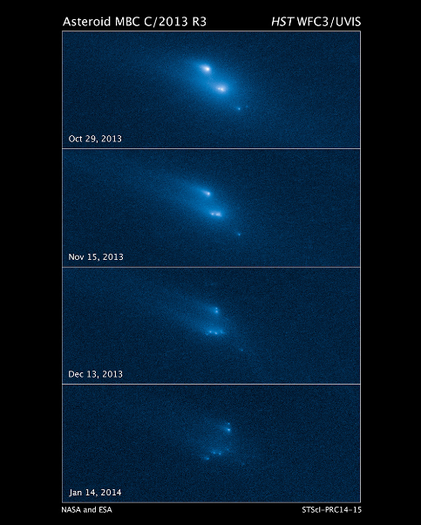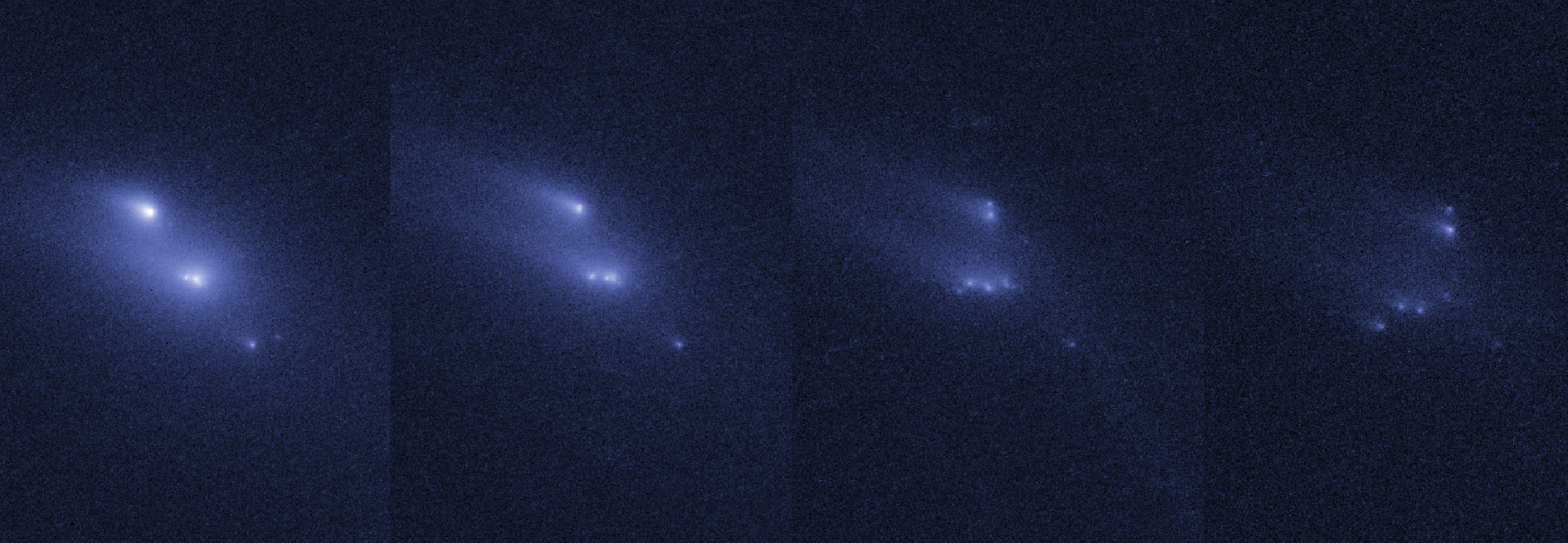 A research team led by iPLEX Director Dave Jewitt has discovered an asteroid between Mars and Jupiter that appears to be slowly breaking apart. In the original lower-resolution images taken, asteroid P/2013 R3 appeared strangely fuzzy. A closer inspection with the W.M. Keck observatory and the Hubble Space Telescope revealed the asteroid was in fact composed of several fragments moving away from each other at a rate of 1 mile per hour. These fragments are surrounded by a cloud of dust the size of Earth, with the largest pieces about twice the size of a football field.
A research team led by iPLEX Director Dave Jewitt has discovered an asteroid between Mars and Jupiter that appears to be slowly breaking apart. In the original lower-resolution images taken, asteroid P/2013 R3 appeared strangely fuzzy. A closer inspection with the W.M. Keck observatory and the Hubble Space Telescope revealed the asteroid was in fact composed of several fragments moving away from each other at a rate of 1 mile per hour. These fragments are surrounded by a cloud of dust the size of Earth, with the largest pieces about twice the size of a football field.
The slow disintegration of P/2013 R3 is unusual. When asteroids collide or experience a high velocity impact, they break up quickly rather than hovering in a slowly expanding cloud of debris. Likewise, the asteroid is not located near a large planet whose gravitational field could rip it apart and P/2013 R3 is positioned far from the Sun whose heat could cause gases to expand and crack the asteroid apart. The cause of the unlikely disintegration, according to Prof. Jewitt and his team, are low energy photons emitted from the surface of the asteroid. These photons are singly not very energetic, but over the course of millions of years they can spin the asteroid at faster and faster rates. If the asteroid is held together loosely, a type of asteroid known as a “rubble pile”, it can start spinning so fast that its component parts separate, creating a slow moving cloud of debris as observed with P/2013 R3.
To read more about this discovery, check out a recent Los Angeles Times article. For more information, visit Dave Jewitt’s website or read their Astrophysical Journal paper.

